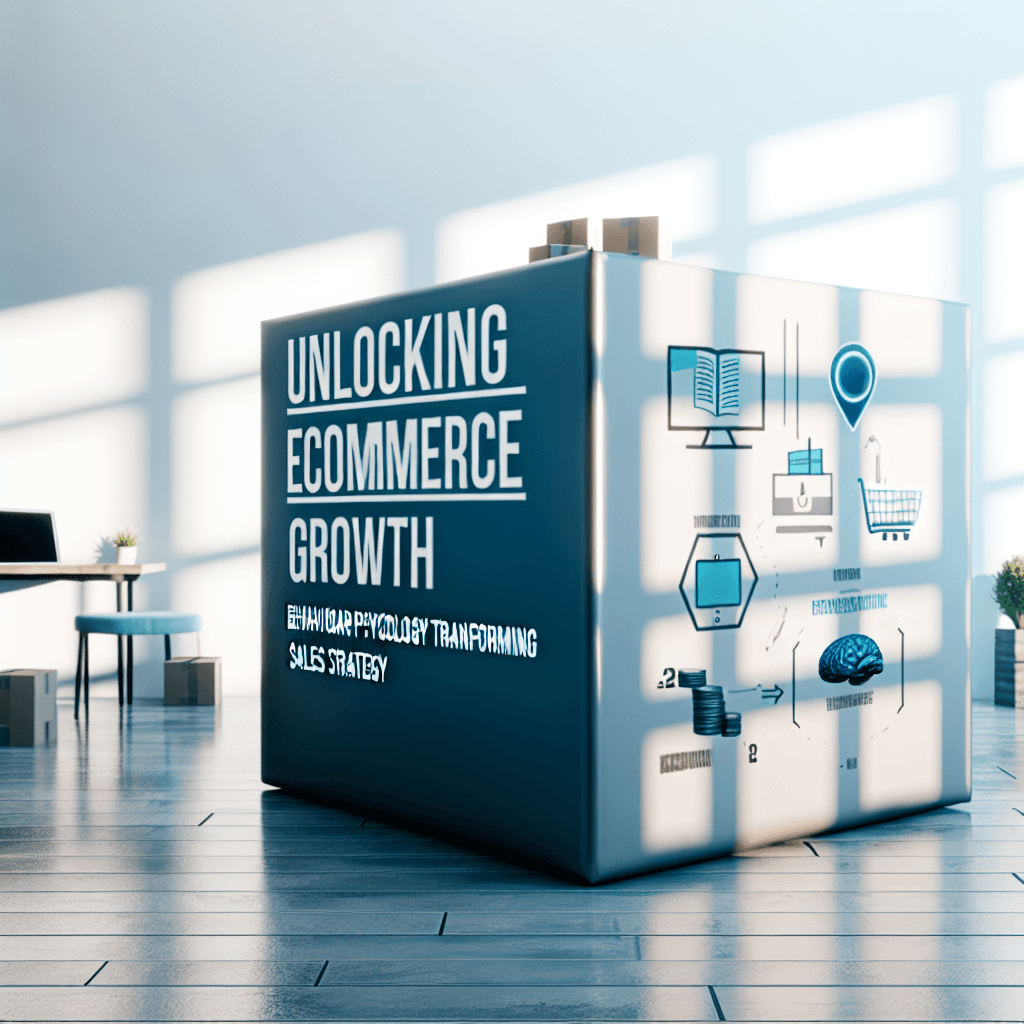Cracking the Code of E-commerce Growth
Think supply chains are tricky? The real puzzle is human psychology. You could offer delivery via space shuttle, but if your online shop doesn't make customers feel clever, secure, and a bit savvy, you'll lose them quicker than mentioning a high bounce rate.
Most online stores tweak everything, except the one thing that counts — their customers' minds. They might have ad spend down to a science but miss the human touch. That's when behavioural psychology takes the spotlight.
Understanding the quirky ways people buy — with emotions, instincts, and shortcuts — helps e-commerce brands boost sales without resorting to endless discounts or annoying pop-ups.
Here's some psychological wizardry to win over those browsers.
Why Brains Matter More Than Spreadsheets
Forget rational, spreadsheet-loving customers. Real folks are browsing your shop while they’re stirring stew and texting their mum. They don’t compare specs; they feel their way to a decision.
In e-commerce, how shoppers feel leads the charge:
- People buy what feels like a win, not necessarily what’s cheap.
- It’s not your return policy they trust, but how your site feels.
- Specs? Nah. A good story always wins.
In short, it puts the human touch back into your online strategy. And you don’t need a PhD to get started.
Easy as Pie: Cognitive Ease
If it feels familiar, it feels right. Our brains love easy things. When your website is simple to navigate, people naturally linger longer.
To make it happen:
- Keep your design clean and straightforward.
- Use everyday language, not technical jargon.
- Make sure your call-to-action buttons are consistent.
Think of Apple’s website — all calm and composed. Less mess, more sales.
Trust the Experts: Authority Signals
We trust people in lab coats. Even virtual ones. Authority pulls people in, making them feel safe when buying from you.
Build trust without boasting:
- Place press mentions at the top.
- Highlight founder bios with the right creds.
- Show trust badges and reviews prominently.
If your product’s been on telly, shout it! Trust isn’t just about the products; it’s about trusting you.
Scarcity: The "Hurry Up" Effect
Nothing nudges decisions like the phrase “Only 3 left.” Scarcity plays on our fear of missing out, but it’s got to feel genuine.
Use scarcity techniques like:
- Showing real-time stock levels.
- Using urgency messages honestly.
- Testing your wording — “Low stock” might work better.
It’s less about pressure, more about helping them decide.
Follow the Herd: Social Proof
Humans are social creatures, plain and simple. If others are buying, we tend to follow. That’s social proof doing its thing.
Nudging with social proof includes:
- Showing real-time purchases.
- Highlighting reviews that relate to buyer needs.
- Labelling bestsellers or top gifts.
- Adding filters like “most wishlisted.”
When lots of people make the same choice, we feel it’s a sound one.
Anchoring: Set the Stage
Want to make a £70 water bottle look affordable? Stick it next to a £180 hydration system.
Anchoring helps buyers decide based on the first price they see. Common tactics include:
- Placing pricey items close to regular-priced ones.
- Offering bundles to change perception.
- Creating a “decoy” expensive variant.
Anchors help guide decisions, not trick them.
Keep It Moving: Remove Friction
A checkout shouldn't feel like filing taxes. Every awkward step increases drop-off. Keep the flow smooth.
Reduce friction by:
- Adding a visual progress bar for checkout.
- Allowing guest checkouts with quick payments.
- Autofilling fields where you can.
- Being frank about shipping and fees.
A slick checkout equals more completed purchases.
Personal Touch: Smart Personalisation
When your store knows me, I’m hooked. Personalisation is more than just addressing me by name.
Try these:
- Custom homepages for returning visitors.
- Product suggestions based on cart, not just algorithms.
- Landing pages that match searches or ads.
Relevance grabs attention. Attention? That leads to sales.
Little Wins: Commitment Bias
Get someone to say a small “yes” and they’ll keep saying it. It’s why wishlists and loyalty programmes work.
Start with:
- Offering discounts for quick quizzes.
- Allowing item saves before accounts.
- Suggesting add-ons after checkout.
A small win leads to bigger purchases down the road.
Framing
How you present info changes how it’s perceived. A £24 shipping charge sounds different when it’s “Tracked, insured, next-day.”
Use framing in ways like:
- Highlight emotional perks, not specs.
- Comparing costs to something familiar.
- Making policies sound rewarding.
Frame well — it influences decisions.
Go with the Flow: Default Options
We often opt for what's pre-set, like water running downhill. Defaults can guide choices without hard sell tactics.
Try:
- Pre-selecting popular product variants.
- Offering balanced default shipping.
- Setting eco-friendly choices as defaults.
Just ensure choices are clear and not set in stone.
Final Word: Minds First, Then Conversions
Improving conversion isn't about quick-fix tricks. It's the psychology that counts.
Understand why people hesitate or commit, and you stop guessing. Not through manipulation, but by making buying easier, warmer, and more satisfying.
Remember:
- Behaviour drives buying.
- Emotion beats logic.
- Trust speeds decisions.
Psychology won’t save a dud product, but it sure gives a good one an edge. Make your store a pleasure to visit, and watch those sales soar.





